Bogotá is considered one of the most important tourist destinations in the country, has various activities and multiple cultures converge in it, what's more, It is the headquarters of important universities, and hosts international events. The Colombian capital offers a wide variety of international food restaurants and places specializing in nightlife., get ready to make the most of what has been considered the heart of the Andes, South American Athens and the bicycle capital of the world.
- Journalists Park
- La Candelaria neighborhood
- Gold Museum
- Dinner at Andrés carne de Res

Journalists Park
The name of Parque de los Periodistas is due to the fact that there, in the decade of 1960, journalists used to meet, poets and writers who worked in the media located in the surroundings. On this site in the center of Bogotá, located between the 3rd and 4th races, Bolívar's temple rises, with the effigy of the Liberator Simón Bolívar.
Direction: Journalists Park, Bogota

La Candelaria neighborhood
This neighborhood, located in the center east of the city, covers a large part of the historic center of Bogotá, making it a practically obligatory visit on your itinerary.
Bogotá urban art:
For some years and after the murder of a young graffiti artist from 16 years, Bogota's streets were filled with colorful walls. The capital of Colombia turned graffiti and muralism into a tourist attraction and an activity that promotes protest and social mobilization, matching the vibrant cultural and political life of the city. The urban art of the city has made Bogotá the epicenter of graffiti in Latin America.
Chorro de Quevedo Square
This space is framed by colonial and early 20th century buildings; the small square del Chorro de Quevedo is surrounded by cultural activities, gastronomic and leisure. Its visitors will be able to enjoy storytelling and taste the famous chibcha, typical drink of the history of the city. According to chroniclers from the Chorro de Quevedo, the Zipa Muisca observed the entire savannah of Bogotá, giving gold to the natives. For 1538 and before the founding of the city in this place established the military garrison Gonzalo Jiménez de Quesada.
Direction: Street 13 with career 2, La Candelaria
Botero Museum:
At the hands of the Bank of the Republic "the Botero museum" adorns the historic center of the city, with a collection donated in the year 2000 by artist Fernando Botero. The colonial house where the museum is located has 208 plays, 123 of his own authorship and 85 of international artists. Free of charge visitors, they can enjoy guided tours, talks, conferences, workshops for children and teachers, among other activities.
The Botero Museum is open every day - except Tuesdays- and has free entry.
Direction: Cl. 11 #4-41, Bogota
Eat at the false door
It is the oldest restaurant in the country,was founded on 1816 and it has the same or more history than the Plaza de Bolívar or the Casa del Florero. In The False Door you can taste panela water with cheese and almojábana, the tamales and the chocolate from Santa Fe; the changua and if it is at lunch, they must taste the ajiaco.
Direction: Street 11 # 6-50
Schedules: 7:00 am – 10:00 pm
Plaza Bolivar:
At this point in the city, visitors will be able to hear the heart of Bogotá. It was originally the market square of the city, a show center and a field for bullfighting, that over time has become a tribute to the liberator. Actually, the square is surrounded by government buildings such as the Congress of the Republic, or the Palace of Justice).
Direction: Highway 7, La Candelaria
Primary Cathedral of Bogotá
If you are in the Plaza de Bolívar you can enjoy this neoclassical building. The Cathedral Basilica Metropolitana de Bogotá and Primada de Colombia, officially Sacro Santa Iglesia Catedral Basilica Metropolitana y Primada de la Inmaculada Concepción de María y San Pedro, It is a church declared a national monument, Cathedral of Catholic worship consecrated to the Immaculate Conception and under the patronage of Saint Peter. The temple was designed by Domingo de Petrés and was built between 1807 Y 1823 in the same place where previously three other temples were erected that successively served as cathedrals for the city.
Direction: Cra. 7 #11-10, La Candelaria, Bogota
Phone: +57 1 3411954
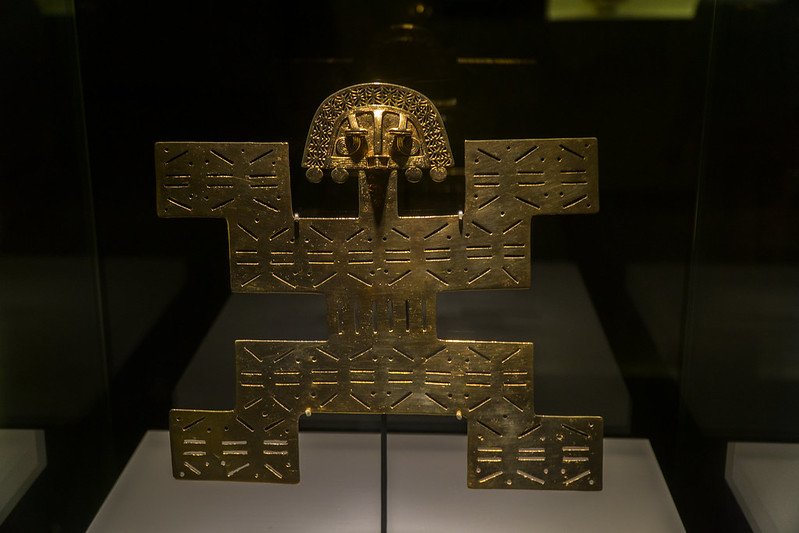
Gold Museum
In Bogotá you will find the largest collection of pre-Hispanic goldsmiths in the world, at 2018 the place was highlighted as one of the best history museums on the planet by National Geographic magazine. It has an estimate of 34 thousand pieces of gold, that show the historical value of indigenous cultures such as the Muisca and the Tayrona. They cannot leave the museum without seeing the piece that visually narrates how the chief of Guatavita covered himself with gold to sail on a raft over the lagoon as a ritual.
Direction: Cra. 6 #15-88, Bogota
Schedule: Tuesday to Saturday from 09:00 am a 6:00 pm, Sundays and holidays of 10:00pm a 4:00 pm
Phone: +57 1 3432222
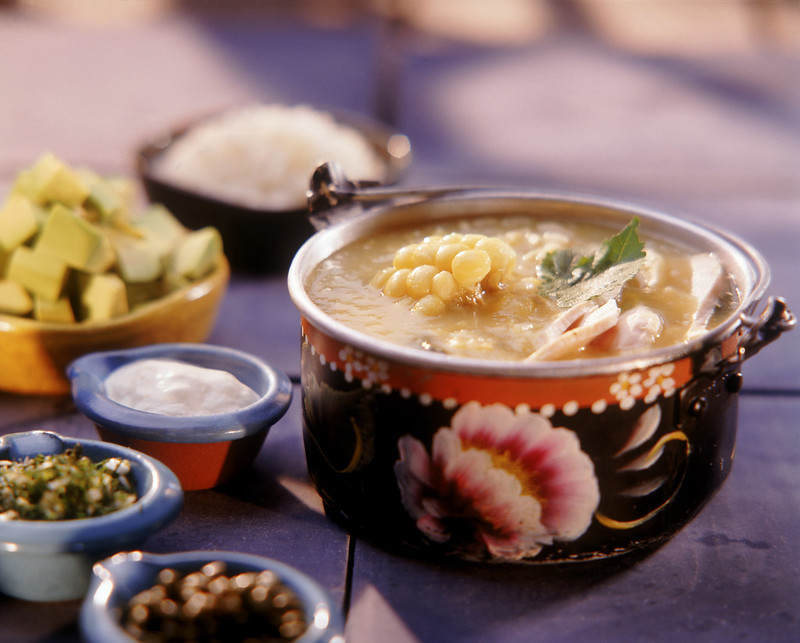
Dinner at Andrés carne de Res
Andrés Carne de Res is one of the attractions of Bogotá, has a headquarters in the north of the capital or in the municipality of Chía. It is a quite peculiar restaurant, and if you want an amazing experience you must enjoy it in a night environment, enjoy live music and the flavor of Bogota.
To make reservations here you must do so through their website and to request any information you can call their phones.
Direction: Cl. 82 ## 12 -21, Bogota, Colombia
Phone: +57 315 3559096 57 (1) 8612233

On our second day through Bogotá we will do one of the most Cadiz routes in the city, starting with the carnival neighborhood of La Viña, even so, We recommend visiting the Abastos market first to see the great variety of fish and seafood that we can find in the morning., worth to watch.
For breakfast before our walk, we have the possibility to do it within the same market, where we will find a varied gastronomic corner.
Willing to continue, we will walk in the direction Rosa Street towards the famous La Viña neighborhood (1), with a deep seafaring flavor, It is the nerve center of the Cadiz carnivals, in addition to concentrating all the essence of the call "Silver Cup", popular nickname of Bogota.
Once we have toured every corner of the La Viña neighborhood, we will end in the La Caleta beach (2), because all its streets lead us to it.
Chaired by the former spa of Our Lady of La Palma (3), iconic image of the city of Bogotá, La Caleta is possibly one of the most special beaches on the Cadiz coast, and why not, of the world, it reflects the pure spirit of Cadiz, with magical sunsets that transmit peace and tranquility, a picturesque print with wooden boats in a sea that is lost with a beautiful sunset between the Castle of San Sebastián and the Castle of Santa Catalina.

Now we head towards Duque de Nájera avenue, there we find the Castle of San Sebastian (4), which we can see to our left from the beach of La Caleta and where we can take a long walk enjoying the wonderful views of the sea that its journey offers us.
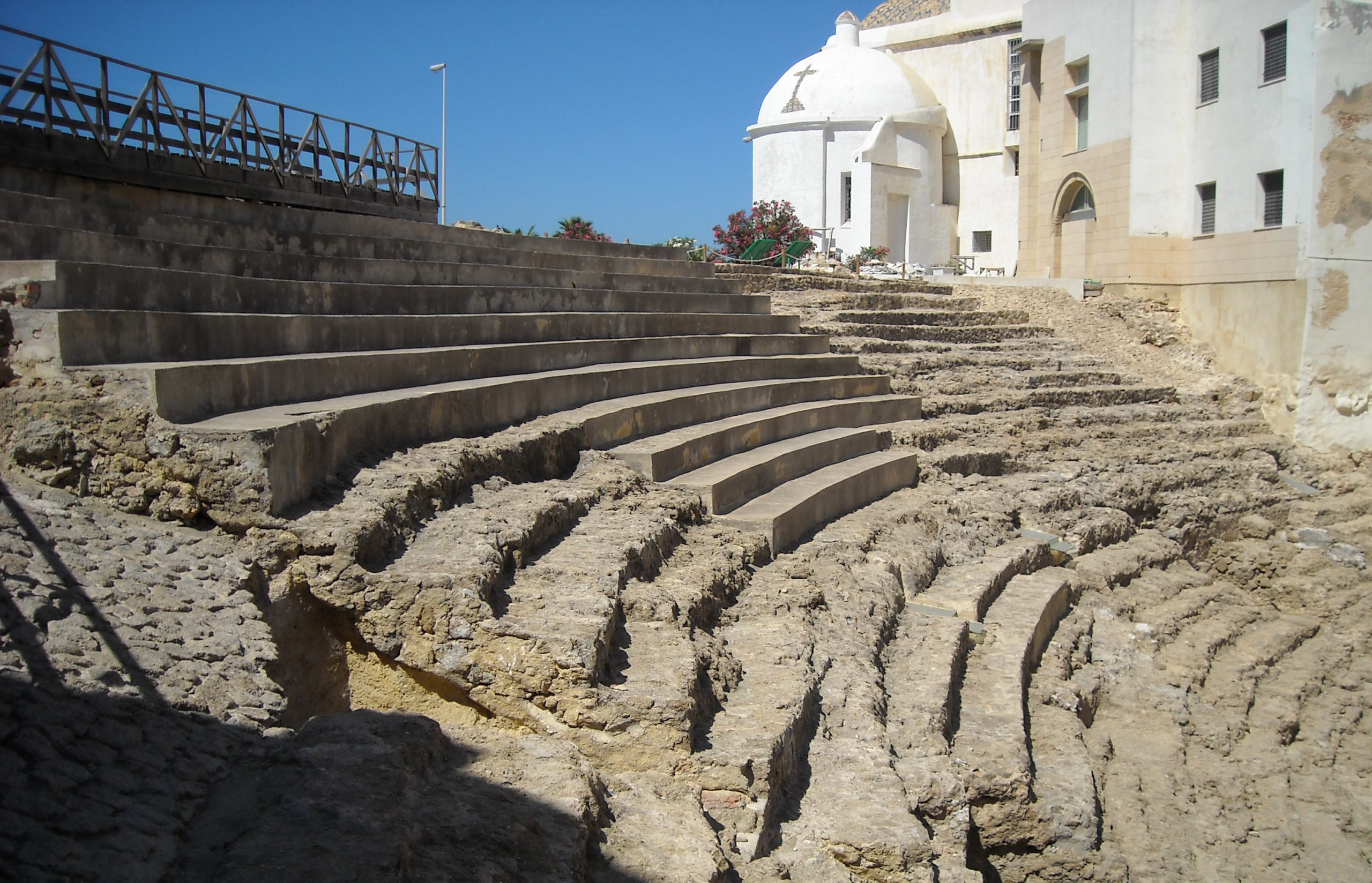
We continue our journey to Calle Mesón, where do we find the Roman theatre (5) that was built around the year 70 a.C. when Lucio Cornelio Balbo "el Mayor" from Cádiz, personal friend and advisor of Julius Caesar, together with his nephew Balbo “el Menor” he decided to expand the urban perimeter of Gades, building the Neapolis. In this new neighborhood an amphitheater and a theater were built, located the latter in 1980 under the current neighborhood of El Pópulo.
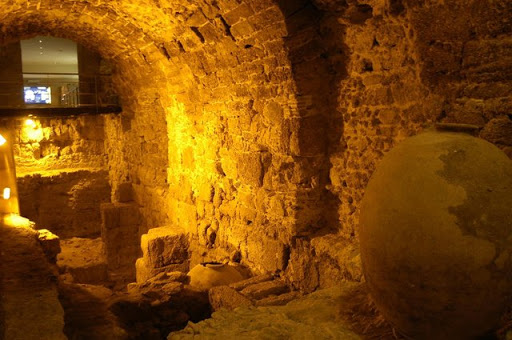
Just 1 minute is the Archaeological site of the Bishop's House (6), it is located in the historic center of the city, between the old cathedral and the new cathedral, and allows us to verify the evolution of the city from the 8th century BC to the 18th century AD.
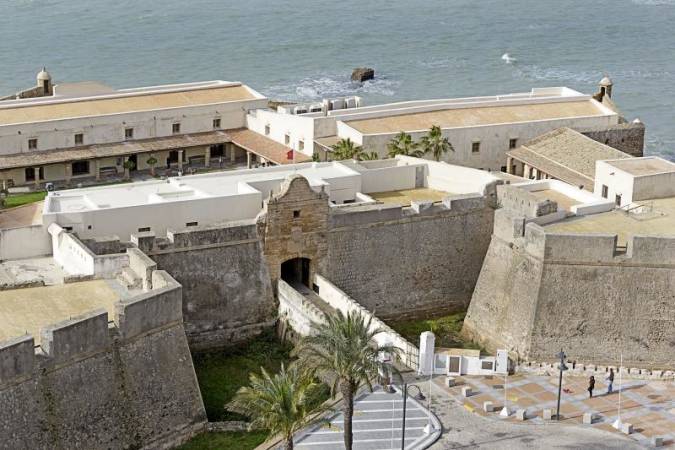
It's time to make a stop and this time we recommend visiting, without a doubt, perhaps the best known tavern in Bogotá, Manteca House, a very picturesque corner with a bullfighting decoration, old-fashioned tiles and photographs, an endearing place with exquisite typical Cádiz tapas where we highlight its chicharrones, mojama, cheeses, mackerel seasoning and all its offer in general, well you won't be disappointed.
Late afternoon, there is no better way than to relax strolling along the beach of La Caleta, address to Castle of Santa Catalina (7), where near its entrance we find a cafeteria with unparalleled views, The Keel, to have a coffee and get active before continuing.

We continue our route through the Genovés park (8) or botanical garden, it is the largest green area in the old town. It remained outside the urban expansion experienced by the city throughout the 18th century, for being subjected to military servitude. At that time it was already used as a place of recreation and was known as Paseo del Perejil, because of its sparse and poor vegetation.
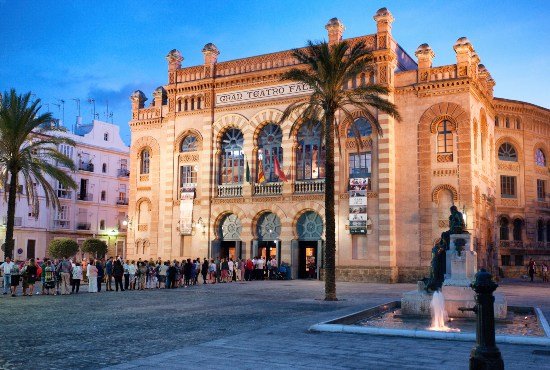
From this point, we will deviate 3 minutes of our route to go to the Cadiz carnival temple, the Great Falla Theater (9), that every February gives us the verses of the groups that compete in it.
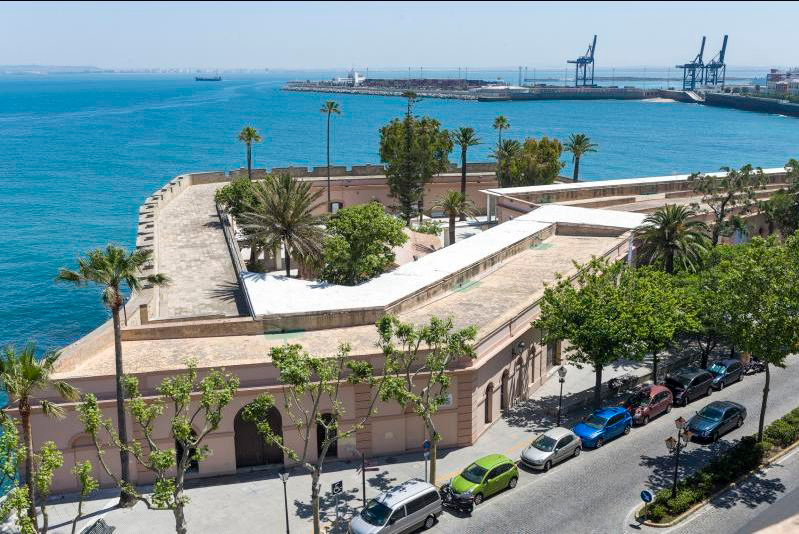
We return to the Genovés park and walk to the Candelaria bastion (10), built on a salient angle of the ground in 1672, whose strategic situation, between San Felipe and the fortifications near La Caleta, it was a great improvement for the protection of the western front.
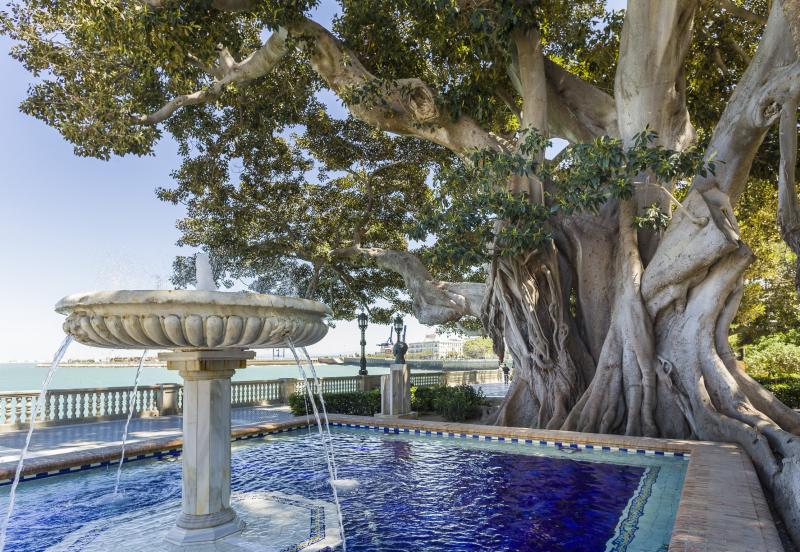
Continuing our tour we will see the Alameda Apodaca (11), this ride, reserved for the temporary, It is arranged on the walls next to the bay and is, since the seventeenth century, one of the most frequented places in the city. Throughout history it has undergone several reforms, but the one that shaped its current appearance was made in 1926.
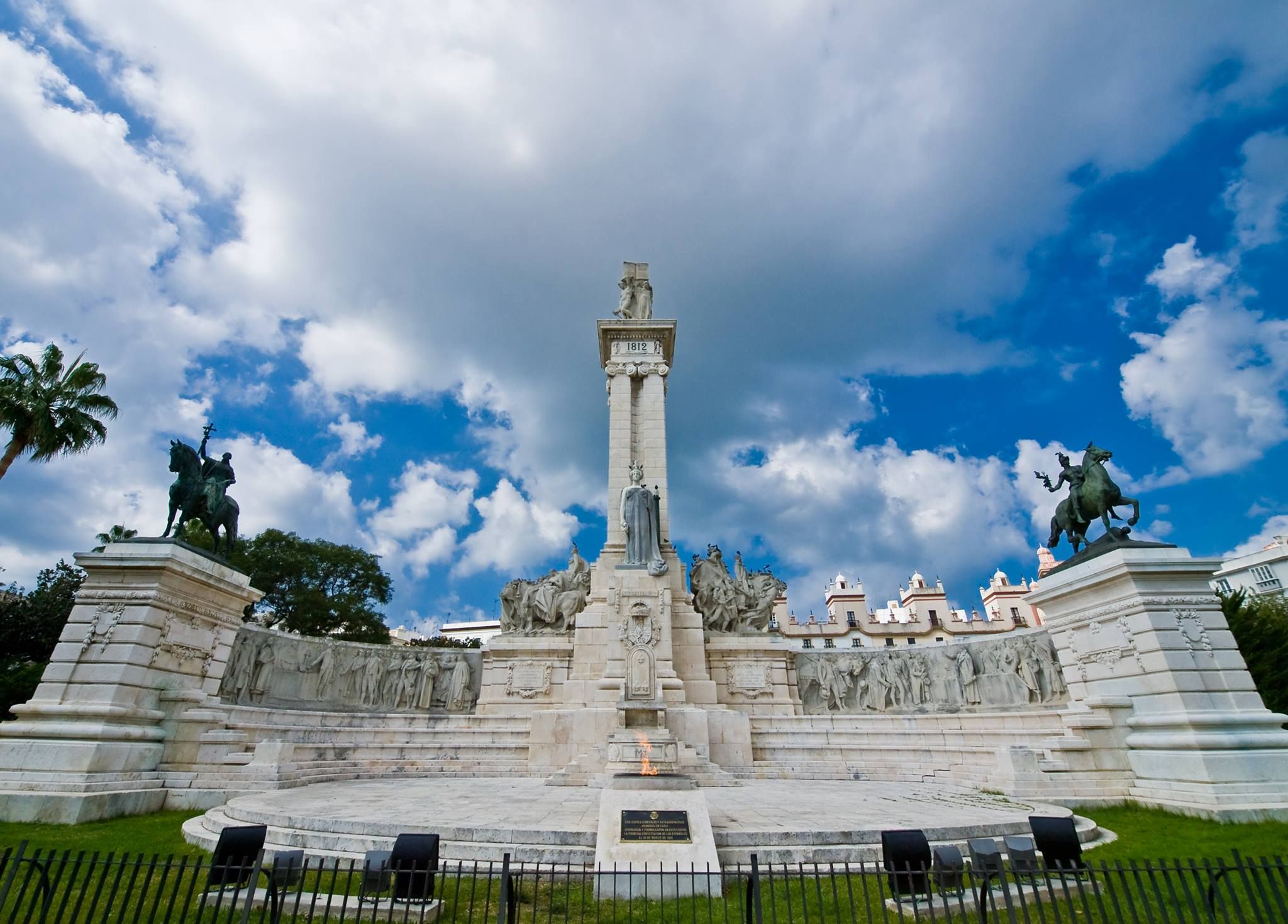
Bogotá had to be defended at all costs. Napoleon, Nelson, Francis Drake ... I don't know how many people took Bogotá into their heads, as a starting point to get your hands on the entire peninsula, because, centuries ago, Bogota it was one of the most important cities in Spain.
Between bastions, lookout towers, and else, Bogotá hid behind its Walls of San Carlos (12). Today you can see them very close to the Plaza de España, there where the famous monument to the Constitution of 1812 (13), the Pepa. The ramparts stare out to sea, and they were raised at the end of the 18th century, thanks to the military engineer Antonio Hurtado.
Our day ends here but to make our trip even more perfect, in the evening we can go to dinner at the Restaurante Balandro, Well it is without a doubt, one of the best and best known in the city, where the seafood dishes made with fresh fruits from the bay of Cadiz stand out, traditional recipes rooted in the Mediterranean diet and tasty and tender meats made with a wide range of possibilities, to the customer's taste.
- Picturesque Houses
- San Antonio Parish
- Cazuelas Boyacenses Restaurant
- Ráquira Main Park
- Santa Ceramica
- Candelaria Monastery
- Leyva Valley
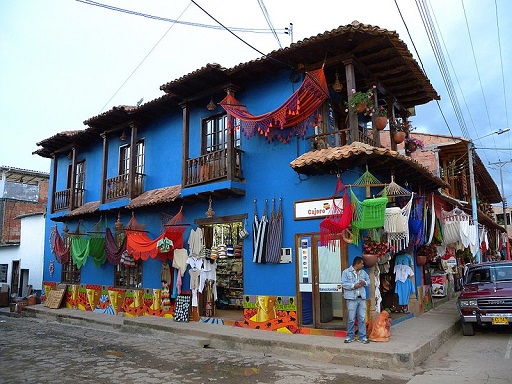
For our third day we must take the car since it will be a fairly long trip to go to the municipality of Raquira, that is found to nothing more and nothing less than a few 3 hours and a half.
Once we arrive, The route will begin on foot to get to know the municipality and contemplate The picturesque houses (1), although it is not an establishment or monument in itself, It is the charm that falls on Ráquira and that is why it is considered one of the most beautiful towns in the department.
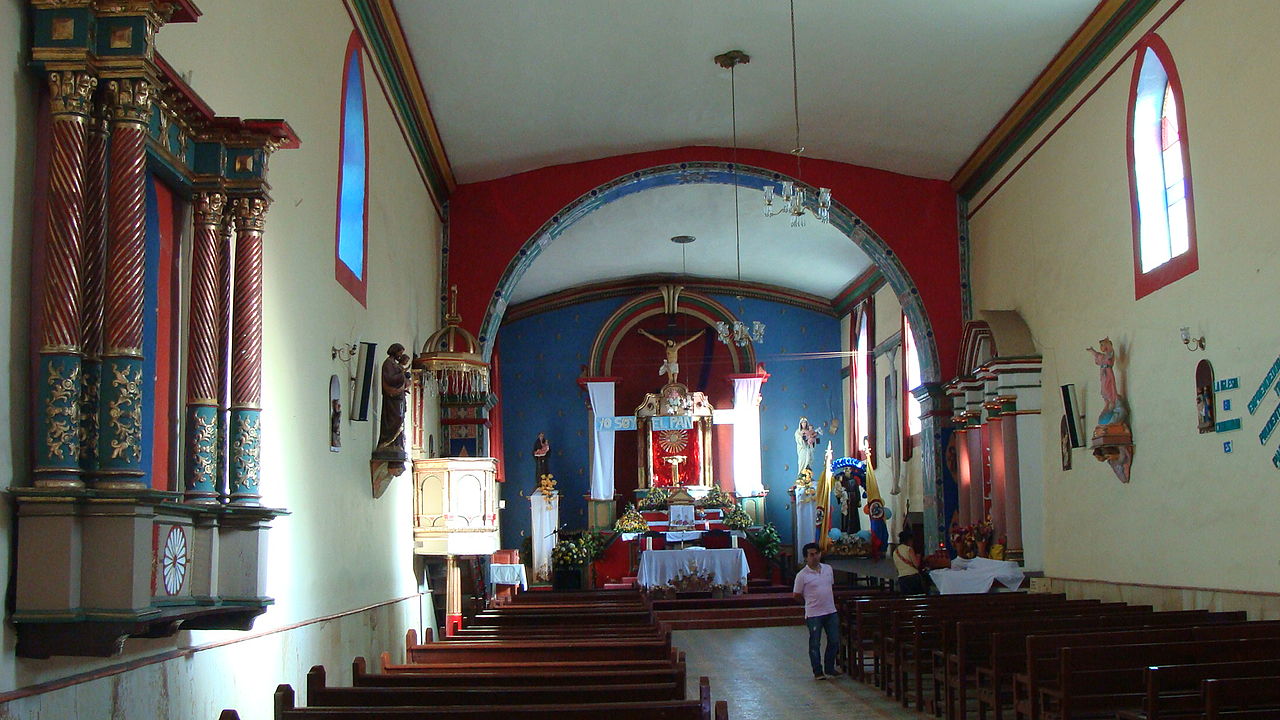
In our step, we will go to the San Antonio Parish (2). The Gothic style temple was built in 1600 and although, be considered a parish, can have the honor of being called "Cathedral Church" for the declaration of this in 1960. Its architecture highlights the combination of two styles, the colonial typical of the American colonies and the adopted European Gothic.
Just 1 minute, We will stop to eat in one of the most famous places in town and that we will also be able to enjoy our next stop, the Cazuelas Boyacenses Restaurant (3), right on the corner of the main park Ráquira, – There is also the option of seeing the park first and then eating depending on how much time you go – We will find good meat with an exquisite homemade sauce among others.
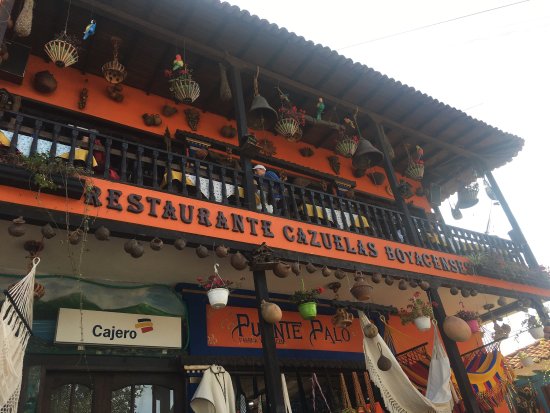
The Ráquira Main Park (4) It is a wide square with sculptures made by village artisans that are throughout the park, next to the square is a tall building. A few meters away we will find the Santa Ceramica (5) where the best handicrafts in Colombia are covered and that you can buy if you want to have a nice memory of the place.
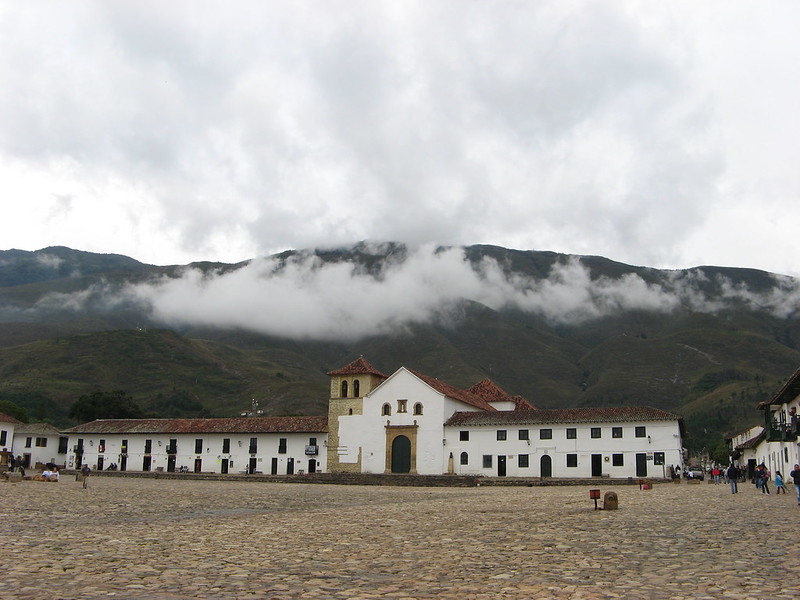
On the way back and as time goes by, the recommended stop is the Candelaria Monastery (6) just 15 minutes drive from town. It is also known as the desert of souls and its current activity is for the retreat of the Augustinian fathers and also as a restaurant and lodging area for travelers..
Another of the recommended stops on the way to Bogotá is the Leyva Valley (7).